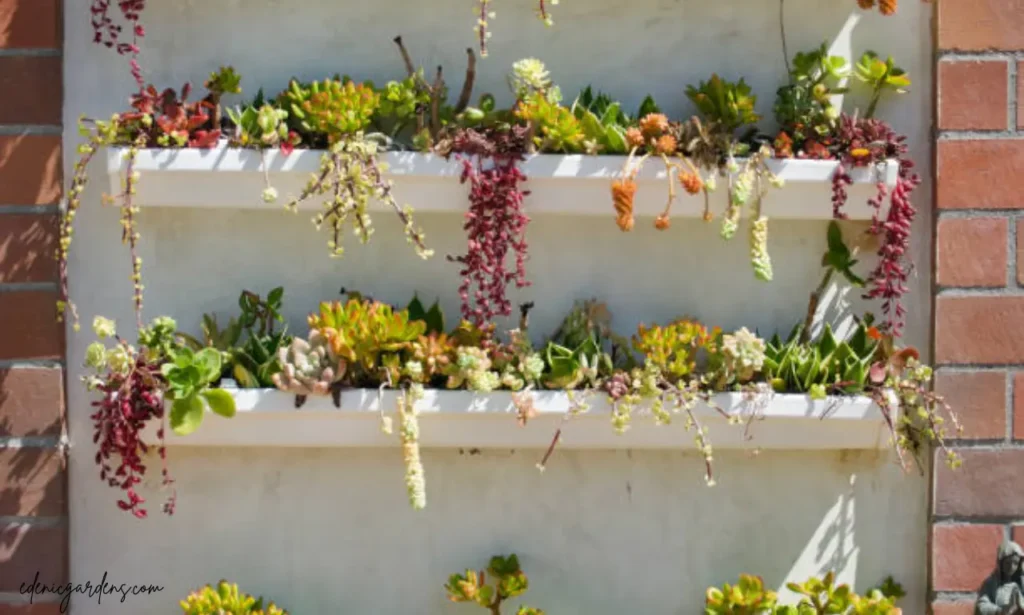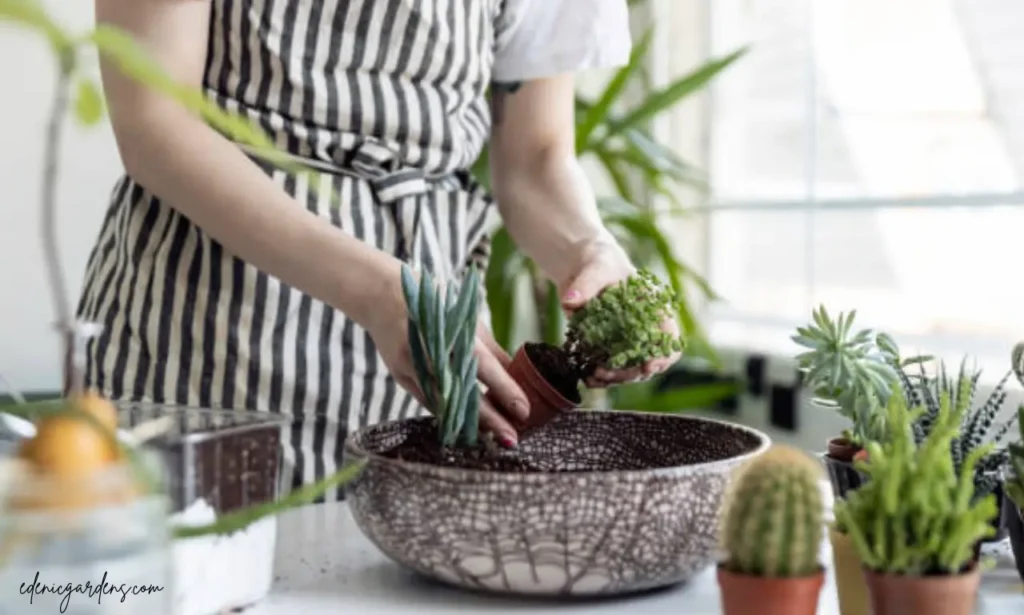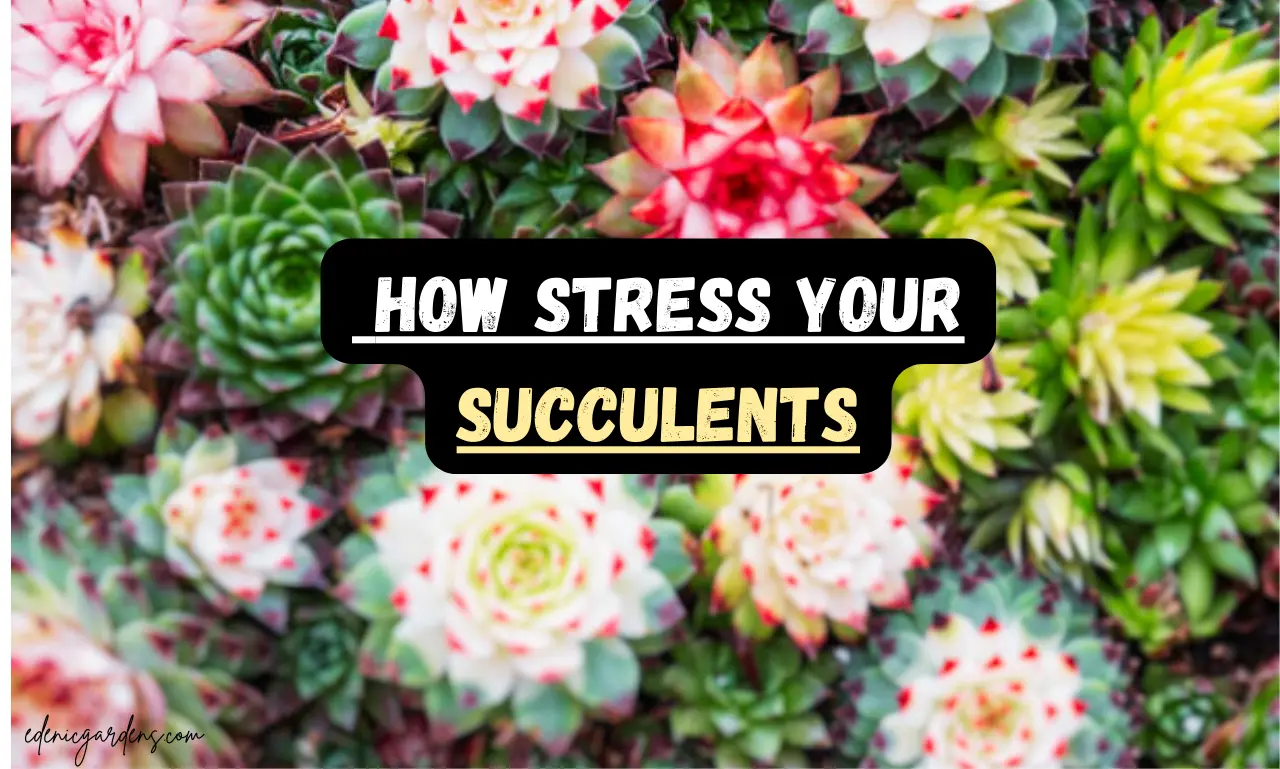In this article, we’ll explore how to intentionally stress succulents in safe ways that promote their health and visual appeal. In the world of gardening, “stress” doesn’t always mean something negative. For succulents, it’s often the key to unlocking vibrant hues and unique forms that make them stand out. Adjust the watering routines to changing light exposure, each method has its own charm and benefits. So get ready to dive into the fascinating process of transforming your companions into eye-catching masterpieces.Let’s start
What Is Succulent Stress?

Succulent stress refers to the changes a succulent plant undergoes when it’s not in its ideal environment. These sturdy plants may appear tough, but they can be sensitive to factors like overwatering, extreme heat, or insufficient light. When a succulent is stressed, you might notice its leaves changing color, wilting, or even dropping off. It’s almost like the plant is trying to tell you something isn’t right!
Water levels
One of the main causes of succulent stress is improper water levels. When succulents are over-watered, their leaves can swell and become mushy, which may lead to rot. On the flip side, too little water can cause them to shrink and wrinkle.
Sun exposure
Sun exposure also plays a crucial role in succulent health. While most succulents love sunlight, too much direct light causing unsightly brown patches or fading colors. It’s essential to find the sweet spot where they receive enough light without being overwhelmed by harsh rays.
Temperature fluctuations
Temperature fluctuations can add another layer of complexity, extreme hot or cold temps might shock succulents, making them vulnerable to disease or stunted growth.
Environmental stress
Succulent stress happens when these hardy plants are put under difficult conditions that make them unhappy. Just like a succulents that can react to their environment. When a succulent experiences environmental stress, it may change its color or shape as a way of expressing discomfort.
Physical stress
Succulent stress refers to the changes these resilient plants. Succulents often display unique signs of physical stress. For instance, if they don’t get enough water, their leaves can shrivel up and lose firmness an adaptation to survive in dry environments. Conversely, over-watering can lead them to develop soft spots or even rot, showing another side of how they react under pressure.
Here are a few tips for healthy stressing
- Reduce their Watering schedule
- Incease the light for succulents
- Changing their environment occasionally
By following these simple effective tips, you can stress your succulents in a healthy way that enhances beauty and growth.
Methods To Stress Succulents

Stress can actually be beneficial for succulents, promoting vibrant colors and unique shapes.
Sunlight Exposure
Sunlight is a vital ingredient in the care of stress succulents, those little plants that can brighten any space. These unique plants have their own preferences when it comes to sunshine. While they thrive in bright light, too much intense sunlight can actually lead to sunburn on their leaves. A sunny window can provide the perfect amount of warmth without overheating them.Different types of succulents have varied sunlight needs. For example,
- Echeveria loves plenty of light and may blossom beautifully with some direct sun exposure.
On the other hand, some varieties prefer indirect light and can flourish in shaded corners of your home.Next time you rearrange your plant corner or add a new succulent to your collection, think about how its unique needs for sunlight will contribute to its overall well-being!
Stressing with Grow Lights
Grow lights can be a changer for stressed succulents looking to bounce back. When these plants experience environmental stress like too much heat or not enough light using artificial lighting can provide the boost they need. Natural sunlight, grow lights help succulents absorb energy more efficiently, promoting healthier growth and vibrant colors.
Choosing the right type of grow light is crucial. Full-spectrum LED lights are a popular choice because they emit all wavelengths of light, which is vital for photosynthesis. Positioning the lights about 12-18 inches above your plants . With consistent use, you might notice your stressed succulents perk up in no time.
Watering Techniques
When your succulents show signs of stress, like drooping leaves or discoloration, the way you water them. Instead using the “soak and dry” method. Give your plant a deep drink until water flows out of the drainage holes, then let it sit dry for at least a week. This approach encourages stronger roots and helps to avoid overwatering.
Another fascinating technique is called “bottom watering.” Place your succulent pot in a shallow dish filled with water for about 30 minutes. The roots will sip up and keeping moisture where it’s most needed and reducing leaf rot on top. Remember to rotate your pots occasionally this ensures that all sides receive even light and promotes balanced growth.
Temperature Variations
Temperature variations play a significant role in the health of your stress succulents. These resilient plants thrive in warmer conditions and also manage brief periods of cooler weather. If you notice your succulent showing signs of stress, such as drooping leaves or color changes, it might be telling you that its temperature preferences are not being met. Keeping your succulents within their ideal range usually between 50°F to 60°F.
Seasonal shifts offer unique opportunities for growth and recovery.
- In the summer, consistent warmth encourages vibrant colors and fuller shapes,
- while lowering temperatures in fall can stimulate dormancy strategies.
Nutrient Management
Nutrient management for stress succulents is all about understanding their unique needs. These hardy plants thrive in tough environments but can still suffer when their nutrient balance is off. Instead of over-fertilizing, which can lead to more stress. These products often contain the right mix of nutrients in lower concentrations that won’t overwhelm your plant.
Pay attention to the signs your succulents, yellowing leaves or stunted growth might mean they’re hungry for nutrients. A good tip is to fertilize during their growing season typically spring and summer.
Conclusion
Stressing your succulents can lead to vibrant colors and enhanced resilience. By manipulating their light exposure, watering schedules, and temperature variations, you can encourage them to exhibit their natural beauty while promoting healthy growth. Keep a close eye on your plants and adjust your techniques based on their responses. So why not experiment with these methods today and watch your succulents thrive like never before?
FAQ’S
1. What does it mean to stress a succulent?
Stressing a succulent refers to intentionally creating conditions that challenge the plant, which can enhance its colors and overall vitality.
2. Why would I want to stress my succulents?
Stressing succulents can lead to more vibrant colors, unique shapes, and increased resilience, making them more visually appealing.
3. What are some safe ways to stress my succulents?
You can limit watering, expose them to direct sunlight, or slightly change their temperature to induce stress without harming the plant.

